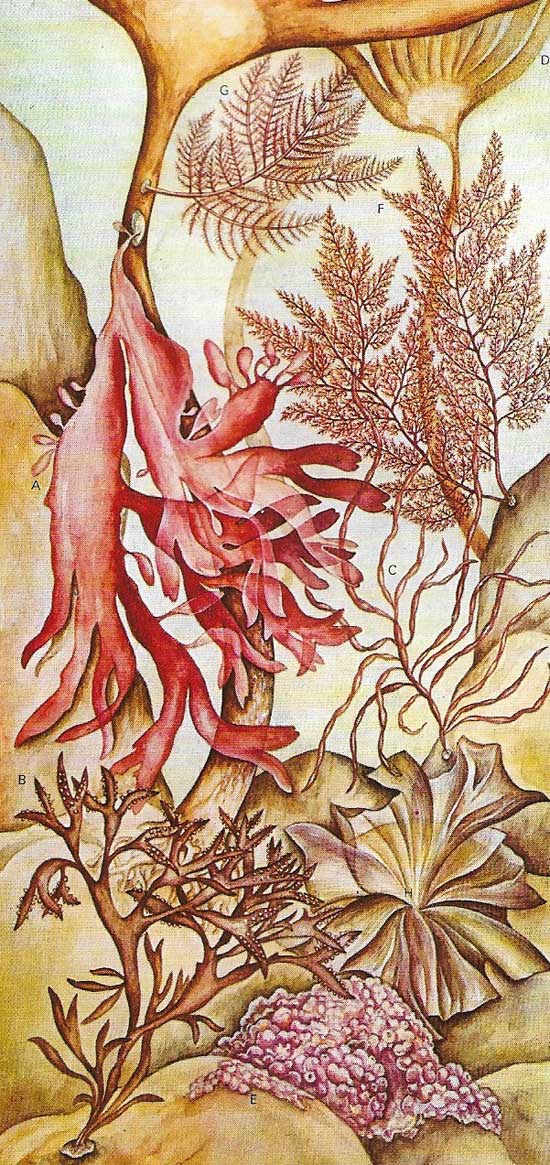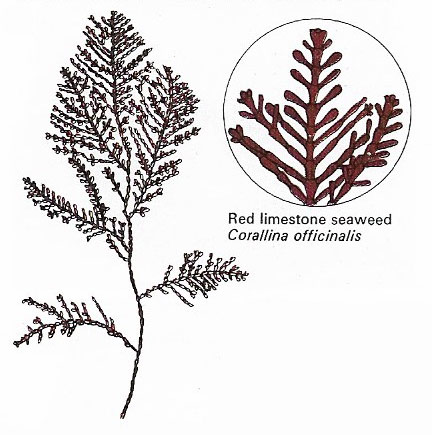red algae

Figure 1. The red algae are mainly marine. Dulse (Palmaria palmata) (A), is common edible species, as is Irish moss (Giganrtina stellata) (B), and laver (Porphyra umbilicus) (H). Dumontia incrassata) (C) is common in shallow inter-tidal pools. It dies in late summer but new plants appear in spring. Phymatolithon polymorphum (E) is a common encrusting coralline species, both inter-tidally and sub-tidally. The beautiful crimson fronds of Heterosiphonia plumosa (F) grow best sub-tidally while the stiff, dark red fronds of Ptilota plumosa (G), are most frequently found growing on the stripes of the oarweed (Laminaria hyperborea) (D).

Figure 2. Red algae are mostly deep-water seaweeds. They also show great diversity of form, from unicellular to ribbon species.
Red algae are organisms belonging to the division Rhodophycota of the Kingdom Protista. Most of the over 4,000 known species of red algae are marine. They range in complexity from simple unicellular organisms to unbranched and branched filaments to complex multiaxial uprights and crusts. Their pigments include chlorophyll a and the phycobiliproteins, red phycoerythrin (often the dominant pigment) and blue phycocyanin, as well as carotenes, lutein, and zeaxanthin. Phycoerythin reflects red light and absorbs blue light. Because blue light penetrates water to a greater depth than light of longer wavelengths, these pigments allow red algae to photosynthesize (see photosynthesis) and live at somewhat greater depths than most other algae. Some rhodophytes have very little phycoerythrin, and may appear green or bluish from the chlorophyll and other pigments present in them. Most red algae have a complex life history with three phases: tetrasporophyte, gametophyte, and carposporophyte.
 |
| Red algae. Photo: US Dept. Natural
Resources and Parks
|
In Asia, rhodophytes are important sources of food, such as nori. The high vitamin and protein content of this food makes it attractive, as does the relative simplicity of cultivation, which began in Japan more than 300 years ago. Some rhodophytes are also important in the formation of tropical reefs, an activity with which they have been involved for millions of years; in some Pacific atolls, red algae have contributed far more to reef structure than other organisms, even more than corals. These reef-building rhodophytes are called coralline algae, because they secrete a hard shell of carbonate around themselves, in much the same way that corals do.


